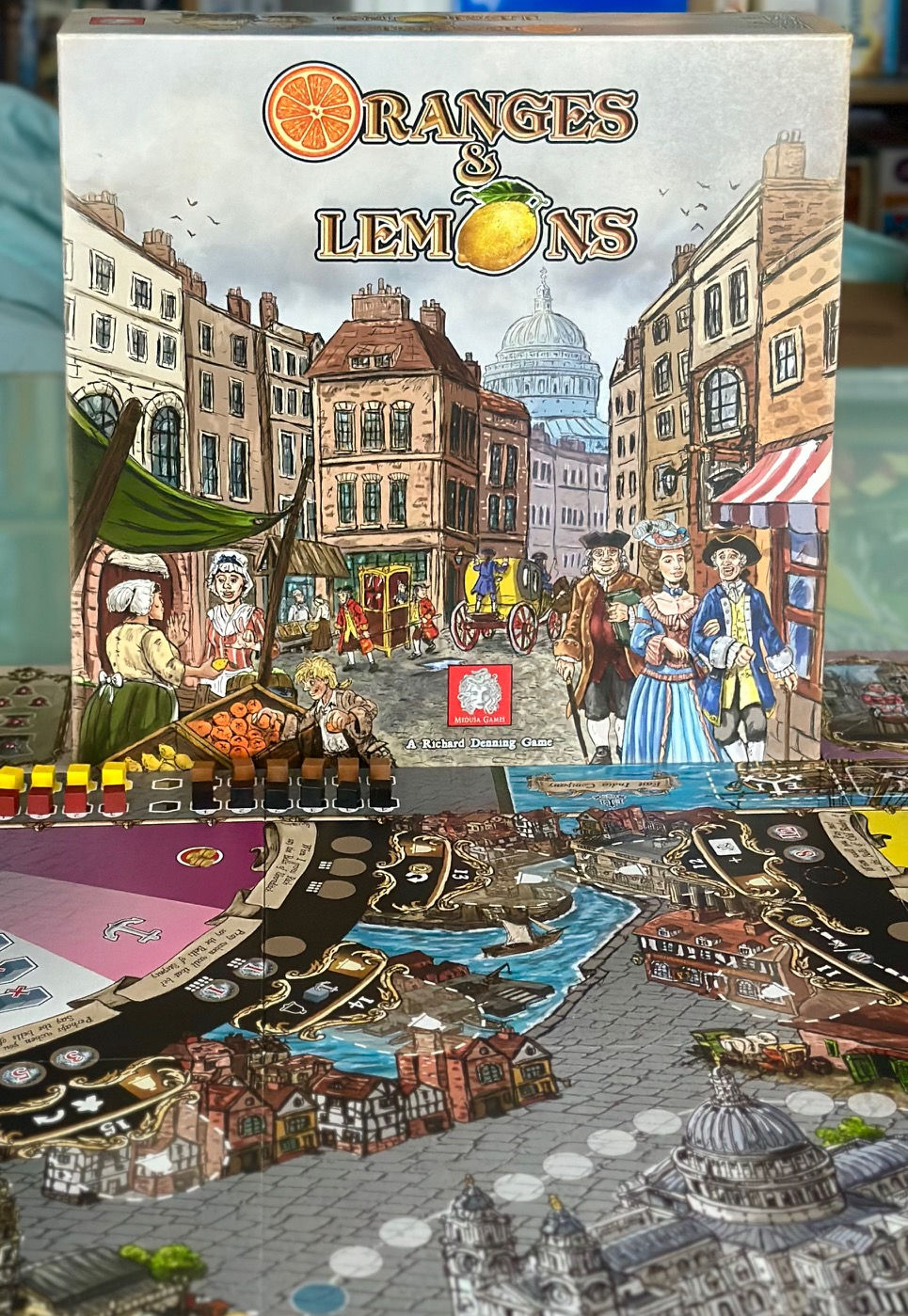It's rarely recited these days but older British gamers will have grown up singing the traditional 18th Century nursery rhyme Oranges & Lemons, which imagines a conversation between the bells of various churches in the City of London. It's this rhyme that's inspired Richard Denning's design for Oranges & Lemons: a medium-weight pick-up-and-deliver worker placement euro game that gives players a church crypt load of options for actions and points scoring but which is nonetheless relatively easy to teach and learn.

The game is played on a board comprising 16 church locations and each offers specific actions. In most cases, the number of spots at each location is limited each round and is more expensive and/or offers a less generous benefit to the players other than the first to place a worker there. And players each start off with just two workers to send to locations. Players will need money to buy resources (bricks, pans, pancakes and, of course, lemons) and tho' there are a couple of church locations that pay out, you'll mostly get money by going to market locations where you can sell those resources or by fulfilling shipping contracts. Players will also want to trade in resources to increase the number of workers they can deploy each round: you can increase the number of five.
There is no shortage of options for spending your cash. There are locations which let you expand your storage capacity (at the start of the game you can store only one resource cube to carry forward to the next round), you can place out church bells that give you an enhanced benefit at a location or a benefit every turn, you can issue loans, buy shares or take a gamble investing in the East India Company, and you can buy votes. All of these give you end-game scoring opportunities, scoring points in their own right but also in relation to other players: each offering an extra 5 points for the player with the most, and a generous 3 points for second place.
At the core tho' of Oranges & Lemons is the tussle for turn order. The locations to which you send a worker meeple is what determines the order in which that meeple will go next turn. By mid-game you'll find that some locations are in particular demand. Even with a full complement of five players and all the spots opened up, the location where you can take and fulfil shipping contracts accommodates only three meeples so players may choose to place a worker at an otherwise less desirable location that triggers early in a round so that they can have first crack at the shipping location in the next round...
The Board's Eye View team have been impressed with how smoothly the game works. Tho' we would have liked it if the different colour cubes were more easily distinguishable, and the busy board makes Oranges & Lemons appear initially very complicated, players quickly get into the rhythm of the game. Turns are mostly quick because you can usually plan ahead, tho' you'll have to expect situations to occur when another player will nab a spot you were hoping to take.
And there can be surprises too in determining the winner. Pretty much all the scoring in Oranges & Lemons is at the end of the game and until you get to the end it usually won't be immediately obvious who has won. All those 5-point majority bonuses add up, and the generosity of the 3-point bonuses for second place can mean a player who finishes second in a large number of scoring categories can emerge as victor against players who seemed to be running away with the game but who turned out to have overspecialised...
Most traditional English nursery rhymes carry grim undertones and Oranges & Lemons is no exception: the rhyme ends: 'Here comes a candle to light you to bed, and here comes a chopper to chop off your head!'. Come on, Medusa Games, we're going to be disappointed if we don't eventually see a candlestick maker and executioner mini-expansion!
#OrangesandLemons #MedusaGames #eurogame #workerplacement #nurseryrhyme #churchbells #pickupanddeliver #18thCentury
